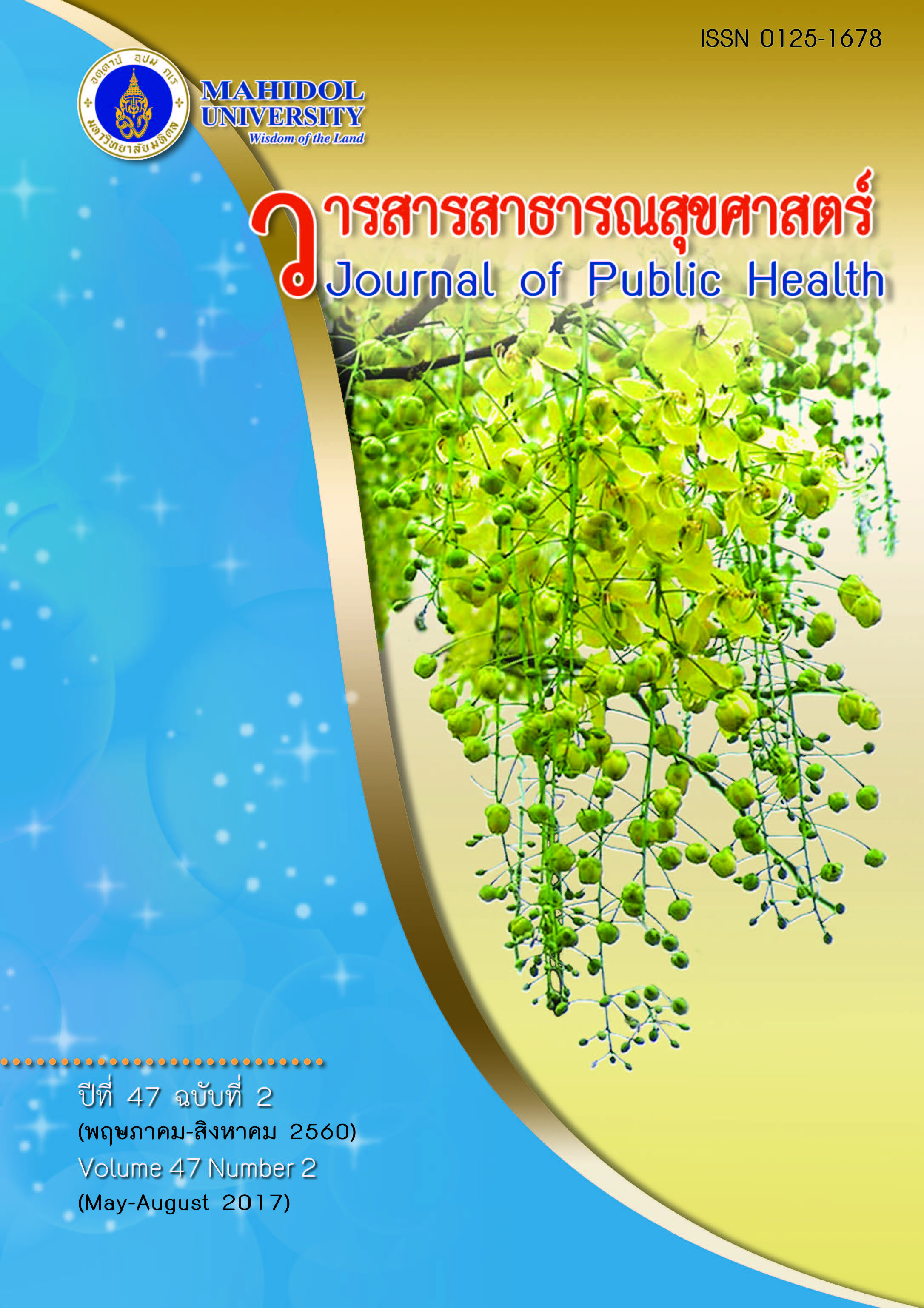การทดสอบความเที่ยงตรงของโปรแกรมการทดสอบเวลาปฏิกิริยาบนระบบแอนดรอยด์
Keywords:
ความล้า, เวลาปฏิกิริยา, โปรแกรมระบบแอนดรอยด์, fatigue, reaction time, android applicationAbstract
การทำงานติดต่อกันเป็นระยะเวลานาน ก่อให้เกิดความล้าทั้งทางกายและจิตใจ ส่งผลให้การตอบสนองของร่างกายช้าลง ตัวแปรที่สะท้อนถึงภาวะดังกล่าว คือ เวลาปฏิกิริยาในการตอบสนองต่อสิ่งเร้า จึงพัฒนาโปรแกรมทดสอบเวลาปฏิกิริยาบนระบบแอนดรอยด์ ที่ใช้งานง่าย และสะดวกในการพกพา โดยการศึกษามีวัตถุประสงค์เพื่อทดสอบหาความเที่ยงตรงเชิงโครงสร้างและความเที่ยงตรงเชิงสภาพของโปรแกรมในการวัดอาการล้าทางกาย ผู้เข้าร่วมการศึกษามีอายุระหว่าง 20-30 ปี จำนวน 30 คน ผู้เข้าร่วมการศึกษาได้รับการประเมินระดับความล้าก่อนและหลังการกระตุ้นให้เกิดอาการล้าทางกาย โดยโปรแกรมทดสอบเวลาปฏิกิริยาที่พัฒนาขึ้น และแบบวัดระดับความล้า ผลการศึกษาพบว่า เวลาปฏิกิริยาทั้งแบบง่ายและแบบซับซ้อนมีค่าเพิ่มขึ้นอย่างมีนัยสำคัญทางสถิติหลังการกระตุ้นอาการล้าทางกายเมื่อเทียบกับขณะพักแสดงให้เห็นถึงความเที่ยงตรงเชิงโครงสร้างในการจำแนกความแตกต่างระหว่างก่อนและหลังการเกิดอาการล้าทางกาย สำหรับความเที่ยงตรงเชิงสภาพ ผลการศึกษาพบว่า โปรแกรมการทดสอบเวลาปฏิกิริยาบนระบบแอนดรอยด์มีความสัมพันธ์เชิงบวกระดับปานกลางกับแบบวัดระดับความล้า โปรแกรมที่พัฒนาขึ้นมานี้เป็นเครื่องมือที่ยอมรับได้ในการวัดอาการล้าทางกายในวัยผู้ใหญ่ตอนต้น ควรศึกษาการวัดอาการล้าทางใจ ศึกษาในสถานการณ์จริงในชีวิตประจำวัน และศึกษาในวัยอื่น ๆ เพิ่มเติม
Validity of An Android Application for Reaction Time Test
Fatigue is a common experience among employees whose work involves prolonged periods of activity. It can lead to decreased work performance. Reaction time is a psychomotor performance parameter, which can reflect the work performance in human. Therefore, researchers have developed an android application for the reaction time test to be used as a convenient and portable tool. The objectives of this study were to determine the construct validity and concurrent validity of the application in assessing physical fatigue. Thirty volunteers, aged 20-30 years, participated in this study. They were asked to perform the reaction time (both simple and choice) test and rate their fatigue level using the visual analog fatigue scale before and after inducing physical fatigue. The results showed that the reaction time (both simple and choice) and visual analog fatigue score of the post-induced physical fatigue were significantly greater than those of the pre-induced physical fatigue. This finding indicated the construct validity of the application, that is, the ability to differentiate between pre- and postfatigue. Regarding the concurrent validity, the results showed a positive moderate relationship between the android application for reaction time test and visual analog fatigue scale. The findings also indicated that the developed android application was an acceptable tool to assess reaction time and fatigue among young adults. Further studies should determine the validity of the application in assessing mental fatigue and examine whether the application is applicable in real life situations and in other age groups.
Downloads
Published
Issue
Section
License
Creative Commons License CC-BY-ND

